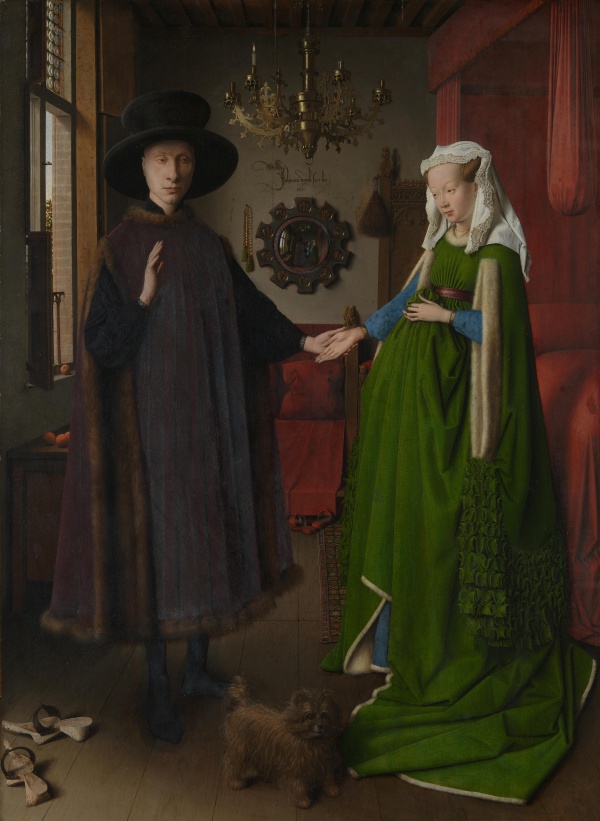Facts About The Arnolfini Portrait
"The Arnolfini Portrait" painted in 1434 by Jan van Eyck, is a celebrated masterpiece capturing the Italian merchant Giovanni di Nicolao Arnolfini and his wife in their Bruges home. This oil painting is renowned not only for its stunning beauty but also for its complex symbolism and pioneering use of oil paints.
Van Eyck's technique was groundbreaking. He employed translucent glazes and blended wet paints to achieve an unprecedented level of detail and realism. The painting’s rich symbolism and meticulously detailed interior have spurred numerous scholarly debates over its meaning.
Art historians have proposed various interpretations of the painting. Some suggest it represents a marriage contract, while others posit it could be a memorial portrait or simply a snapshot of everyday life. Key elements, such as the mirror with its reflections, the couple's clothing, and objects in the room like a dog, a candle, and fruit, all carry symbolic weight and have been extensively analyzed.
The painting has a fascinating history of ownership. Originally owned by the Arnolfini family, it later passed through the hands of notable figures such as Don Diego de Guevara, Margaret of Austria, Mary of Hungary, and Philip II of Spain. Ultimately, it found its permanent home at the National Gallery in London in 1842. This journey through various collections and countries underscores its enduring significance in the art world.

 Ireland
Ireland